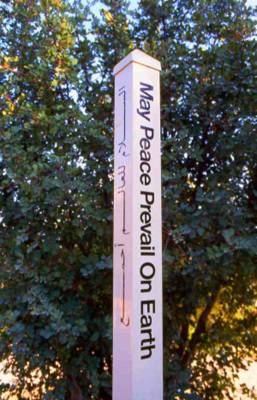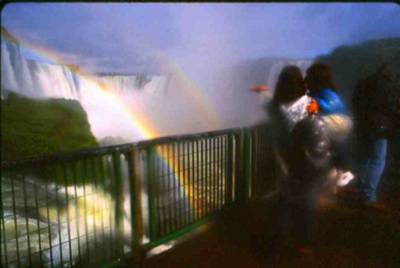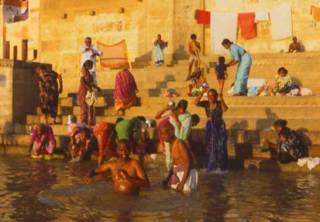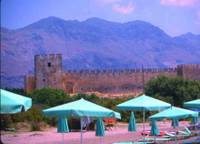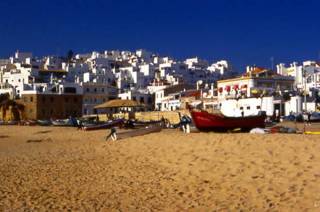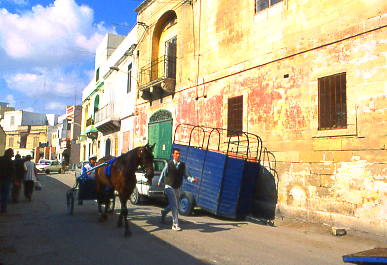
"Git me a...a...a...vodka hamburger!" Overheard about 11 am at Sunset Beach Resort in Montego Bay, Jamaica. This was our first all-inclusive. We've crossed that threshhold -- teenagerhood -- that gives the kids some say in where we go on family vacations. They wanted other kids, discos, water sports, unlimited soda and snacks, video games, billiards, basketball, license to stay out late, and as few "mom's road trips" as possible. They got all that. And Mike and I had a blast.
My travel journals usually run over 50 pages. I record everything. (If you travel with me, watch what you say, because I'm writing it down. It can and may well be used against you in a forum more public than a court of law...say a blog post, a book, a magazine article. I know on which day of which trip one of my family members tried to put a Cheez-It up his or her nose, and I know exactly what he or she said during the attempt...)
That my Jamaica journal contains only four and a half pages of brief, choppy entries -- most of them snippets of dialogue or staff activity narration heard around the fun-filled, family-friendly compound -- attests to the fact that I was either having too much fun or was too affected by the combination of hot sun and endless free alcohol to either want or be able to write much.
Some entries: "The lady Felicia is in the house!" "The man Glenroy is in the house!" "Give it up one time for the lady Janet Jones!" "Show some love!" "Hello, lady. Hello, girl. Hello, mister." "Six square meals a day. What more could you ask for?" "What did we do in Negril? Went to Burger King and had bammy and fries." "Give it up nice and lovely for the man Rohan!" "We always winter somewhere warm, usually Thailand or India." "I just heard at the front desk that all the flights are cancelled. You're takin' a canoe home." "Fine with us, as long as it's a booze cruise..."
We went off campus a few times (but only for a few hours. Didn't want to miss out on too much of the all-included fun back at the ranch). Dana spent a morning in horse heaven at Chukka Blue's Horseback and Swim Tour. She prizes the souvenir 8x10 of her riding through the surf in a bathing suit. We rented a car and took the mountain road up to Anchovy, passing a thin, brown, totally buck naked man walking along the highway. Sent Dana into shock in the backseat. We had a flat tire outside Sharon's bar in Shettlewood. Mike fixed the flat while Adam, Dana and I sipped Pepsis with Sharon, bright pink curlers in her hair. I pointed to the bursting orange groves across the road. "Time to pick?" "No, not time. Still bare." Dana sat on the stoop and chatted with Sharon's rooster. Pet-deprived Dana asked me, wistfully, "Can we get a chicken?" (This is Dana talking. She meant a chicken to have and to hold, not to eat.) Tire fixed. "You coming back?" asked Sharon. "We love Jamaica. We might just be back." We waved to Sharon as we passed her place on our return trip down to the coast. She was sweeping away the brown water that seeps from the broken pipe under her driveway. "Government pipe. I call them every day, and they say they will come, but they don't come."
I went off campus for my daily run. The resort guards would open the gate, and I'd pass the knot of cab drivers waiting outside the property for fares. One cabbie timed me every day. "Slow today!" he'd say, pointing at his watch. "Too many Red Stripes last night!" I'd shout.
Vodka hamburger in paradise. Come to Jamaica and feel alright.
Visit www.LoriHein.com
